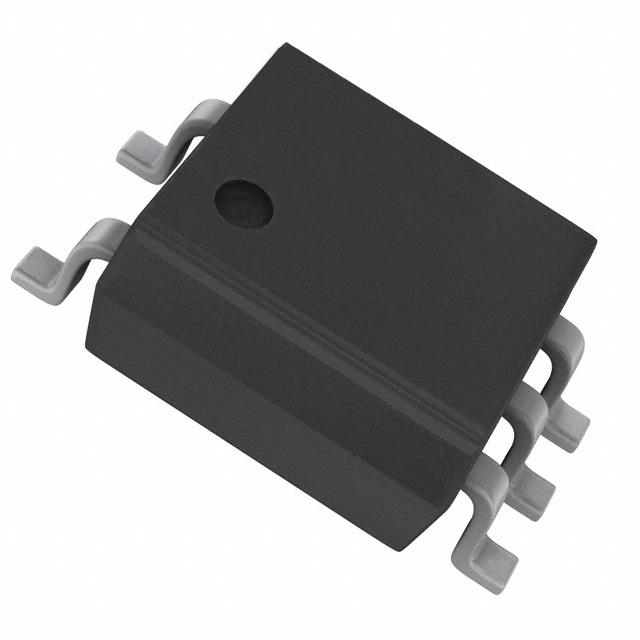Ⅰ. Isolators
Ⅱ. Mechanical Characteristics of Isolators
Ⅲ. Electrical Characteristics of Isolators
Isolators, also known as isolation barriers or isolation devices, are electrical components used to provide electrical isolation between two or more circuits. The purpose of electrical isolation is to prevent current from flowing between two circuits, which can be dangerous and cause equipment damage or injury to personnel.

Isolators are commonly used in industrial control systems to provide electrical isolation between input signals and output signals. For example, an isolator can be used to isolate a high voltage signal from a sensor and provide a low voltage signal to a controller or PLC. This ensures that any potential voltage spikes or other electrical disturbances in the high voltage circuit do not affect the low voltage circuit.
Isolators can be categorized into two main types:
Galvanic isolators: Galvanic isolators use a transformer to provide electrical isolation between two circuits. The transformer has two coils, one on each side of the isolation barrier, which are not physically connected to each other. The input signal is applied to one coil, and the output signal is taken from the other coil. The transformer provides electrical isolation, as there is no direct electrical connection between the two coils.
Opto-isolators: Opto-isolators use an LED and a photodetector to provide electrical isolation. The input signal is applied to the LED, which emits light. The light is then detected by the photodetector on the other side of the isolation barrier, which generates an output signal. Opto-isolators provide high-speed isolation and are often used in digital circuits.
Isolators have several benefits, including:
Electrical safety: Isolators provide electrical isolation, which can prevent electric shocks and reduce the risk of equipment damage and fires.
Signal integrity: Isolators can help preserve signal integrity by preventing noise and other electrical disturbances from affecting the output signal.
Compatibility: Isolators can be used to connect circuits with different voltage levels or signal types, which can improve system compatibility.
Reliability: Isolators can help increase system reliability by preventing faults and other issues from affecting multiple circuits.
Isolators are an important component of industrial control systems and are used to provide electrical isolation and improve system safety and reliability.
Mechanical Characteristics of Isolators
Mechanical characteristics of isolators depend on their design and application, but some general features are common to most isolators.
Housing: Isolators are usually housed in a protective enclosure to provide mechanical protection and ensure proper installation. The housing may be made of various materials, such as plastic, metal, or ceramic, depending on the application and environmental conditions.
Terminals: Isolators usually have two or more terminals for connecting the input and output circuits. The terminals may be designed for different types of connections, such as screw terminals, spring terminals, or solder pads.
Size and shape: Isolators come in various sizes and shapes, depending on their application and the required level of electrical isolation. For example, a small opto-isolator may be used in a low-power digital circuit, while a large galvanic isolator may be used in a high-power industrial control system.
Mounting options: Isolators may have various mounting options, such as DIN rail mounting, panel mounting, or surface mounting. The mounting option depends on the application and the available space for installation.
Environmental ratings: Isolators may have environmental ratings, such as IP (Ingress Protection) or NEMA (National Electrical Manufacturers Association) ratings, to indicate their resistance to dust, moisture, and other environmental factors. The rating depends on the application and the environmental conditions where the isolator will be installed.
Operating temperature range: Isolators may have an operating temperature range, which indicates the temperature range in which the isolator can operate reliably. The temperature range depends on the application and the environmental conditions.
The mechanical characteristics of isolators are important to consider when selecting and installing isolators in industrial control systems. Proper installation and selection can ensure reliable operation and improve the safety and performance of the system.
Electrical Characteristics of Isolators
The electrical characteristics of isolators depend on their design and type. However, some common electrical characteristics of isolators include:
Input/output voltage range: The input/output voltage range indicates the maximum and minimum voltage that the isolator can accept on the input and output sides. The voltage range depends on the application and the specific type of isolator.
Input/output current range: The input/output current range indicates the maximum and minimum current that the isolator can handle on the input and output sides. The current range depends on the application and the specific type of isolator.
Isolation voltage: The isolation voltage is the maximum voltage that the isolator can withstand between the input and output sides without allowing current to flow. The isolation voltage depends on the specific type of isolator and the application.
Common-mode rejection ratio (CMRR): CMRR is a measure of an isolator's ability to reject common-mode noise on the input signal. A high CMRR indicates that the isolator can reject more noise and provide a cleaner output signal. The CMRR depends on the specific type of isolator.
Response time: Response time is the time it takes for the isolator to change the output signal after a change in the input signal. The response time depends on the specific type of isolator and the application.
Isolation resistance: Isolation resistance is the resistance between the input and output sides of the isolator. A high isolation resistance indicates better isolation and less leakage current. The isolation resistance depends on the specific type of isolator.
Operating temperature range: The operating temperature range is the range of temperatures in which the isolator can operate reliably. The operating temperature range depends on the specific type of isolator and the application.
Understanding the electrical characteristics of isolators is crucial in selecting the appropriate isolator for the specific application. Choosing an isolator with appropriate electrical characteristics can help ensure reliable operation and improve the safety and performance of the system.
标签:isolators



